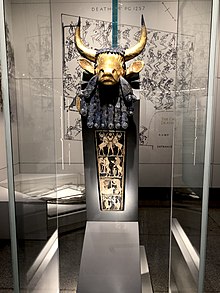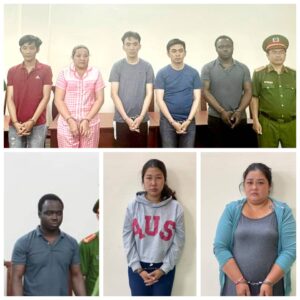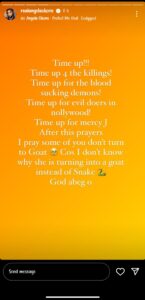Music History in Different Nations

The Qin dynasty (221–206 BCE), established by Qin Shi Huang, lasted for only 15 years, but the purported burning of books resulted in a substantial loss of previous musical literature. The Qin saw the guzheng become a particularly popular instrument; as a more portable and louder zither, it meet the needs of an emerging popular music scene. During the Han dynasty (202 BCE – 220 CE), there were attempts to reconstruct the music of the Shang and Zhou, as it was now “idealized as perfect”. A Music Bureau, the Yuefu, was founded or at its height by at least 120 BCE under Emperor Wu of Han, and was responsible for collecting folksongs. The purpose of this was twofold; it allowed the Imperial Court to properly understand the thoughts of the common people, and it was also an opportunity for the Imperial Court to adapt and manipulate the songs to suit propaganda and political purposes. Employing ceremonial, entertainment-oriented and military musicians, the Bureau also performed at a variety of venues, wrote new music, and set music to commissioned poetry by noted figures such as Sima Xiangru. The Han dynasty had officially adopted Confucianism as the state philosophy, and the ganying theories became a dominant philosophy. In practice, however, many officials ignored or downplayed Confucius’s high regard for yayue over suyue music, preferring to engage in the more lively and informal later. By 7 BCE the Bureau employed 829 musicians; that year Emperor Ai either disbanded or downsized the department, due to financial limitations, and the Bureau’s increasingly prominent suyue music which conflicted with Confucianism. The Han dynasty saw a preponderance of foreign musical influences from the Middle East and Central Asia: the emerging Silk Road led to the exchange of musical instruments, and allowed travelers such as Zhang Qian to relay with new musical genres and techniques. Instruments from said cultural transmission include metal trumpets and instruments similar to the modern oboe and oud lute, the latter which became the pipa. Other preexisting instruments greatly increased in popularity, such as the qing, panpipes, and particularly the qin-zither (or guqin), which was from then on the most revered instrument, associated with good character and morality.
Greece
Greek written history extends far back into Ancient Greece, and was a major part of ancient Greek theatre. In ancient Greece, mixed-gender choruses performed for entertainment, celebration and spiritual reasons.[citation needed] Instruments included the most important wind instrument, the double-reed aulos, as well as the plucked string instrument, the lyre, especially the special kind called a kithara.
Music in Ancient India
The principal sources on the music of ancient India are textual and iconographical; specifically, some theoretical treatises in Sanskrit survive, there are brief mentions in general literature and many sculptures of Ancient Indian musicians and their instruments exist. Ancient Sanskrit, Pali, and Prakrit literature frequently contains musical references, from the Vedas to the works of Kalidasa and the Ilango Adigal‘s epic Silappatikaram. Despite this, little is known on the actual musical practices of ancient India and the information available forces a somewhat homogeneous perspective on the music of the time, even though evidence indicates that in reality, it was far more diverse.
The monumental arts treatise Natya Shastra is among the earliest and chief sources for Ancient Indian music; the music portions alone are likely from the Gupta period (4th century to 6th century CE).
Persia and Mesopotamia
Up to the Achaemenid period

The Bull Headed Lyre of Ur, found in the Royal Cemetery at Ur, is the best known of the ancient Lyres of Ur
In general, it is impossible to create a thorough outline of the earliest music in Persia due to a paucity of surviving records. Evidenced by c. 3300–3100 BCE Elam depictions, arched harps are the first affirmation of Persian music, though it is probable that they existed well before their artistic depictions. Elamite bull lyres from c. 2450 have been found in Susa, while more than 40 small Oxus trumpets have been found in Bactria and Margiana, dated to the c. 2200–1750 Bactria–Margiana Archaeological Complex. The oxus trumpets seem to have had a close association with both religion and animals; a Zoroastrian myth in which Jamshid attract animals with the trumpet suggests that the Elamites used them for hunting. In many ways the earliest known musical cultures of Iran are strongly connected with those of Mesopotamia. Ancient arched harps (c. 3000) also exist in the latter and the scarcity of instruments makes it unclear as to which culture the harp originated. Far more bull lyres survive in Ur of Mesopotamia, notably the Bull Headed Lyre of Ur, though they are nearly identical to their contemporary Elamite counterparts. From the evidence in terracotta plaques, by the 2nd-century BCE the arched harp was displaced by the angular harps, which existed in 20-string vertical and nine-string horizontal variants. Lutes were purportedly used in Mesopotamia by at least 2300 BCE, but not until c. 1300 BCE do they appear in Iran, where they became the dominant string instruments of Western Iran, though the available evidence suggests its popularity was outside of the elite. The rock reliefs of Kul-e Farah show that sophisticated Persian court ensembles emerged in the 1st-century BCE, in the which the central instrument was the arched harp. The prominence of musicians in these certain rock reliefs suggests they were essential in religious ceremonies.
Like earlier periods, extremely little contemporary information on the music of the Achaemenid Empire (550–330 BCE) exists. Most knowledge on the Achaemenid musical culture comes from Greek historians. In his Histories, Herodotus noted that Achamenid priests did not use aulos music in their ceremonies, while Xenophon reflected on his visit to Persia in the Cyropaedia, mentioning the presence of many female singers at court. Athenaeus also mentions female singers when noting that 329 of them had been taken from the King of Kings Darius III by Macedonian general Parmenion. Later Persian texts assert that gōsān poet-musician minstrels were prominent and of considerable status in court.
Music in the Parthian and Sasanian Periods
The Parthian Empire (247 BCE to 224 CE) saw an increase in textual and iconographical depictions of musical activity and instruments. 2nd century BCE Parthian rhuta (drinking horns) found in the ancient capital of Nisa include some of the most vivid depictions of musicians from the time. Pictorial evidence such as terracotta plaques show female harpists, while plaques from Babylon show panpipes, as well as string (harps, lutes and lyres) and percussion instruments (tambourines and clappers). Bronze statues from Dura-Europos depict larger panpipes and double aulos. Music was evidently used in ceremonies and celebrations; a Parthian-era stone frieze in Hatra shows a wedding where musicians are included, playing trumpets, tambourines, and a variety of flutes. Other textual and iconographical evidence indicates the continued prominence of gōsān minstrels. However, like the Achaemenid period, Greek writers continue to be a major source for information on Parthian music. Strabo recorded that the gōsān learned songs telling tales of gods and noblemen, while Plutarch similarly records the gōsān lauding Parthian heroes and mocking Roman ones. Plutarch also records, much to his bafflement, that rhoptra (large drums) were used by the Parthian army to prepare for war.

c. 379 CE Bas relief of Sassanid women playing the chang in Taq-e Bostan, Iran
The Sasanian period (226–651 CE), however, has left ample evidence of music. This influx of Sasanian records suggests a prominent musical culture in the Empire, especially in the areas dominated by Zoroastrianism. Many Sassanian Shahanshahs were ardent supporters of music, including the founder of the empire Ardashir I and Bahram V. Khosrow II (r. 590–628) was the most outstanding patron, his reign being regarded as a golden age of Persian music. Musicians in Khosrow’s service include Āzādvar-e Changi, Bamshad, the harpist Nagisa (Nakisa), Ramtin, Sarkash and Barbad, who was the most famous. These musicians were usually active as minstrels, which were performers who worked as both court poets and musicians; in the Sassanian Empire there was little distinction between poetry and music.
SEE ALSO: The Influence of Afrobeat
Other Arab and African cultures
The Western African Nok culture (modern-day Nigeria) existed from c. 500–200 BCE and left a considerable amount of sculptures. Among these are depictions of music, such as a man who shakes two objects thought to be maracas. Another sculpture includes a man with his mouth opening (possibly singing) while there is also a sculpture of a man playing a drum.
Like Our Story ? Donate to Support Us, Click Here
You want to share a story with us? Do you want to advertise with us? Do you need publicity/live coverage for product, service, or event? Contact us on WhatsApp +16477721660 or email Adebaconnector@gmail.com








